REPRINTED WITH PERMISSION FROM THE CHRISTIAN SCIENCE MONITOR
Mangroves that capture and store carbon dioxide are critical to combating global warming in Mexico. Through pollination, bees ensure the reproduction of mangrove trees.
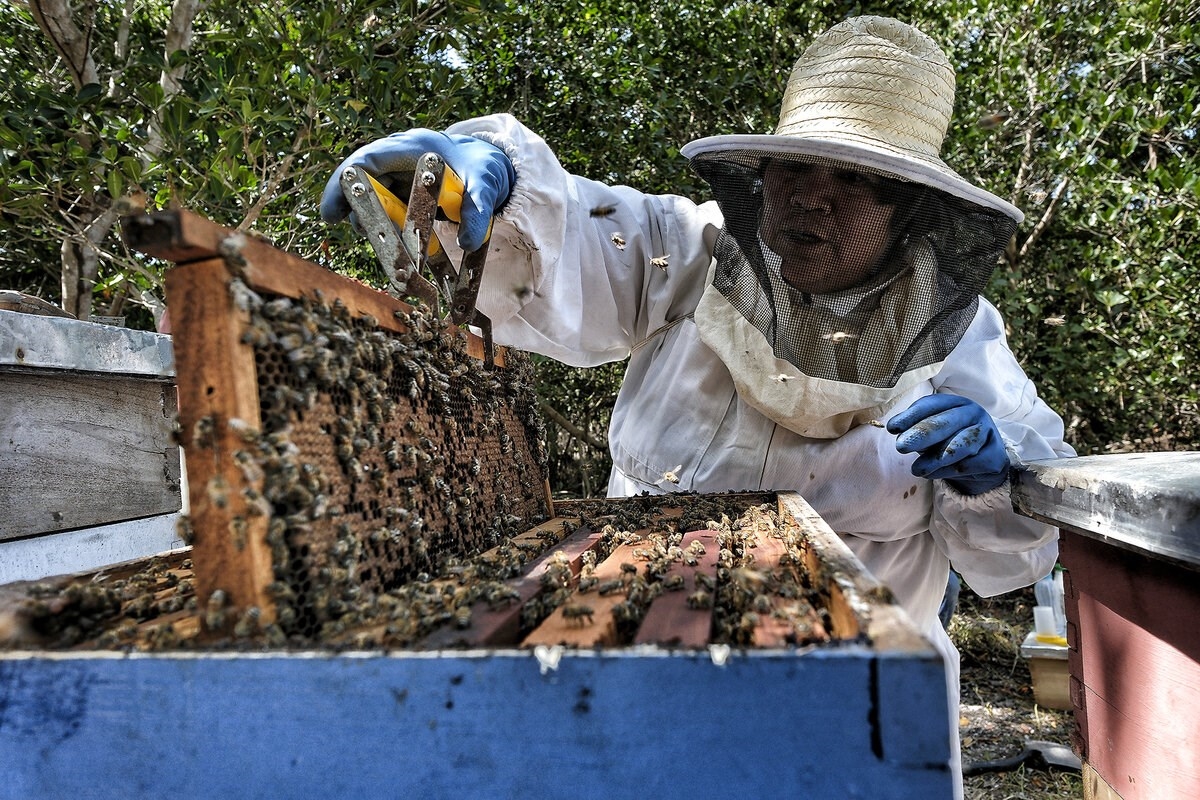 SMALL WONDERS: Elma Guadalupe Cab Hochín checks one of the family’s beehives among the mangroves of Isla Arena, Mexico. Oscar Espinosa
SMALL WONDERS: Elma Guadalupe Cab Hochín checks one of the family’s beehives among the mangroves of Isla Arena, Mexico. Oscar Espinosa
| Isla Arena, Mexico
The Cab family’s cluster of beehives is in a small clearing that opens up in the thick mangrove forest of Isla Arena, Mexico. Dressed in a protective suit, the family’s matriarch, Elma Guadalupe Cab Hochín, lifts the lid of one of the hives and explains that, until two years ago, she wasn’t interested in bees. Never mind that her father had been a beekeeper and that the surname Cab, coincidentally, means “bee” in Mayan.
“As a child, I was very afraid of them,” she says. “Once, I was stung and never wanted to accompany my father again.”
Today, she is a passionate beekeeper. That transformation came about after her son Santiago Francisco Tucuch Cab, an agro-ecological technician specializing in beekeeping, was injured in a motorbike accident. He could no longer tend to an experimental apiary project he had started on Isla Arena with the aim of raising bees to help pollinate the surrounding environment and protect the mangroves. “The rest of the family got involved to look after his hives,” Elma says, referring to her husband, Mario Humberto Gómez Martín, and her youngest son, Humberto Emanuel Gómez Cab.
Santiago, who is still recovering, had also installed a meliponarium – a wooden structure with a roof of dried palm leaves to keep out the sun and rain – in his parents’ backyard. The stingless bee species housed in the meliponarium has been native to the area since pre-Columbian times. “They are part of our identity, and we must continue to raise them so that they don’t disappear,” Elma says to a group of tourists visiting the meliponarium.
Last year, the family’s cooperative, called Honey Kaab, and four small beekeepers from the states of Campeche and Yucatán created the Mangrove Honey Producers Network. It allows the beekeepers to share their knowledge and experiences with conservation, and seeks out marketing channels for mangrove honey, which is slightly saltier than most other varieties.
Mangroves are critical to combating global warming because they capture and store carbon dioxide. Through pollination, bees ensure the reproduction of mangrove trees, whose ecosystem also acts as a protective barrier for the coastline.
“We alone will not change the world, but any effort, no matter how small, counts,” Elma says.
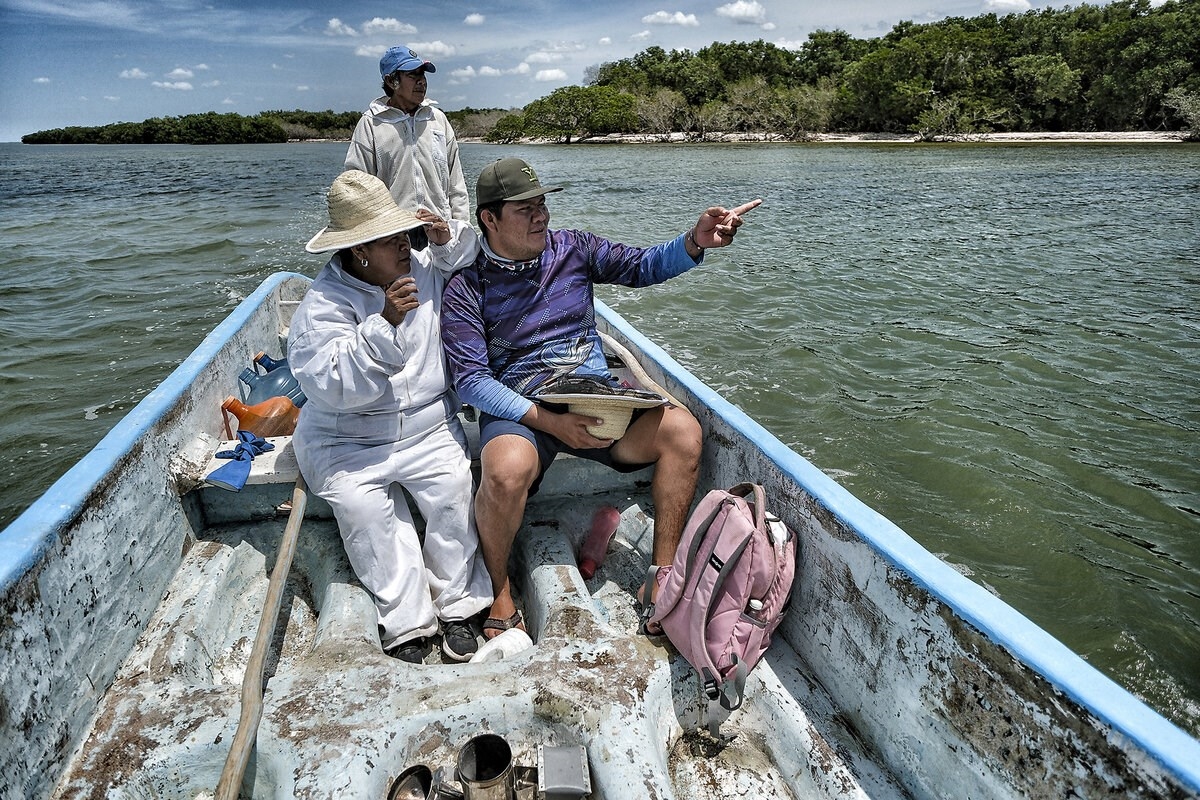 Oscar EspinosaFOREST PATROL: Elma and her son Humberto Emanuel Gómez Cab (right) look at mangroves while her husband, Mario Humberto Gómez Martín (back), takes them home in his boat. Bee pollination ensures mangrove reproduction.
Oscar EspinosaFOREST PATROL: Elma and her son Humberto Emanuel Gómez Cab (right) look at mangroves while her husband, Mario Humberto Gómez Martín (back), takes them home in his boat. Bee pollination ensures mangrove reproduction.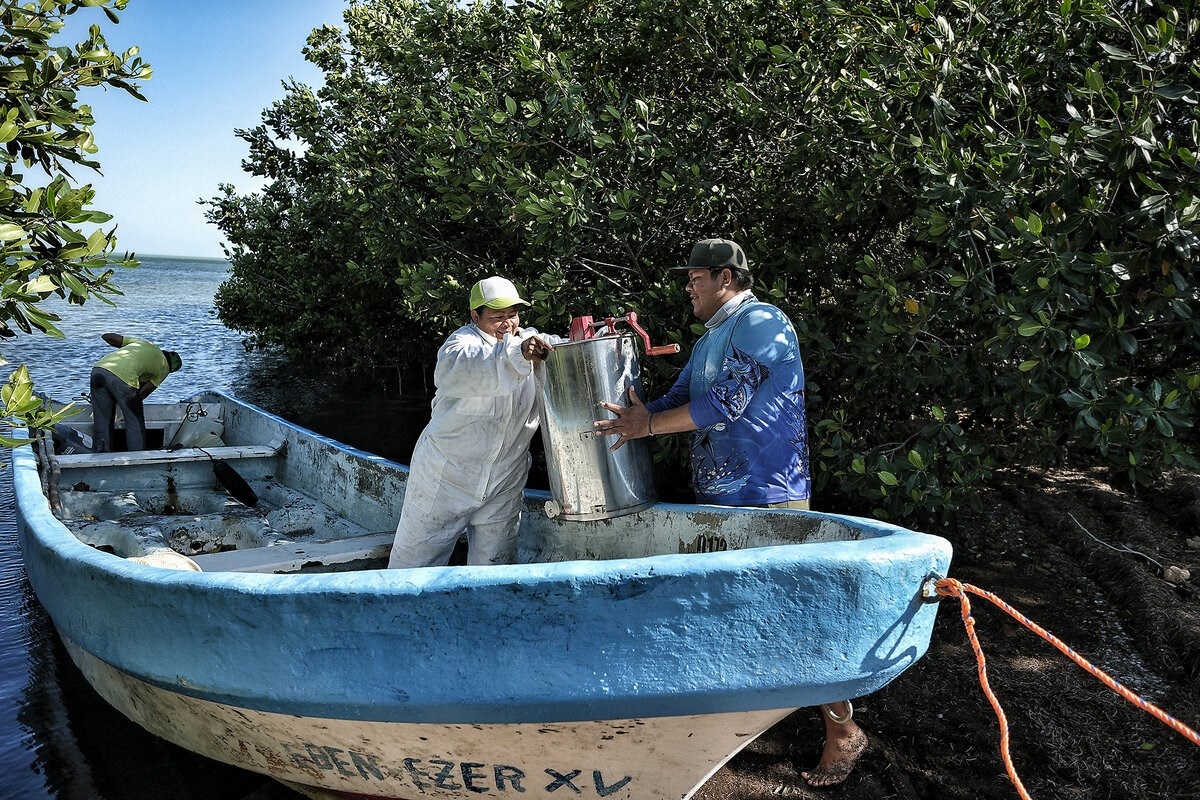 Oscar EspinosaTOOL OF THE TRADE: Elma and Humberto unload the manual extractor they use to get honey from their hives.
Oscar EspinosaTOOL OF THE TRADE: Elma and Humberto unload the manual extractor they use to get honey from their hives.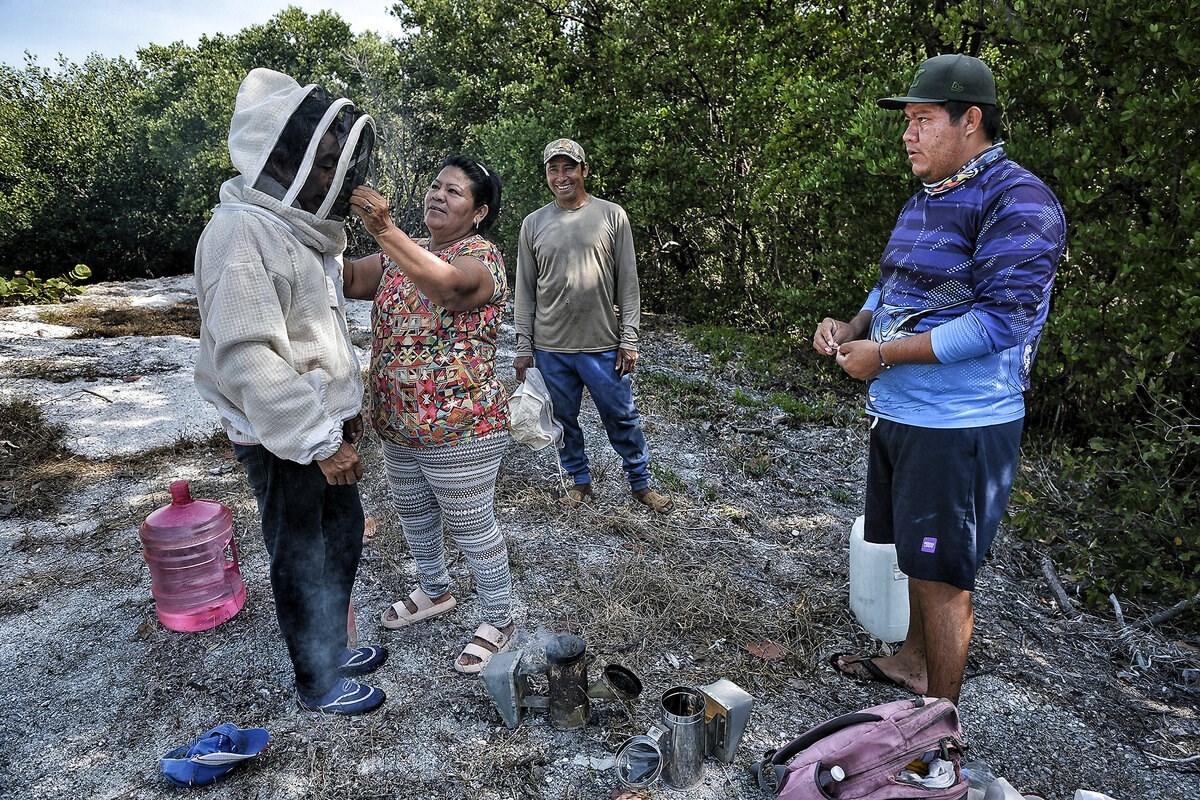 Oscar EspinosaBEE PREPARED: Elma helps Mario put on a safety suit before approaching the hives. The Cab family goes twice a week to check on the apiary in the mangroves.
Oscar EspinosaBEE PREPARED: Elma helps Mario put on a safety suit before approaching the hives. The Cab family goes twice a week to check on the apiary in the mangroves.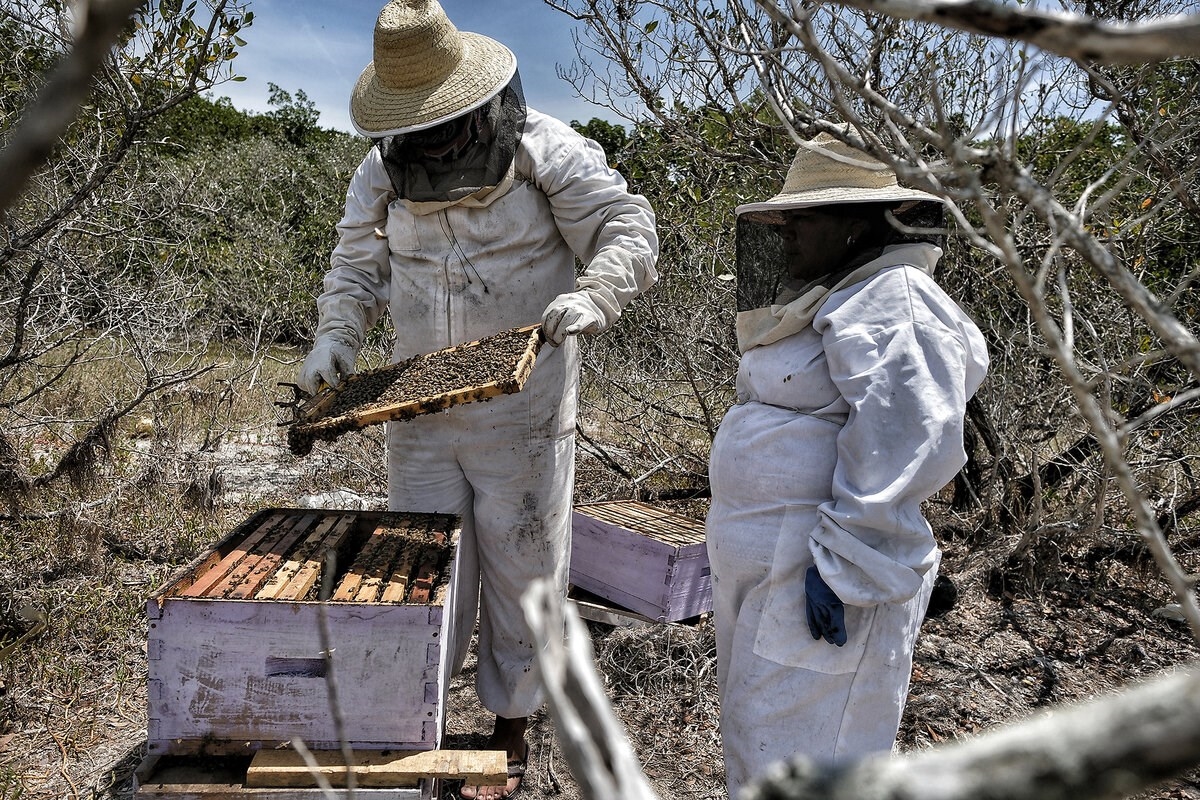 Oscar EspinosaGROWTH INDUSTRY: Humberto examines the behavior of bees that were separated from the rest of the hives as he ponders expanding the apiary.
Oscar EspinosaGROWTH INDUSTRY: Humberto examines the behavior of bees that were separated from the rest of the hives as he ponders expanding the apiary.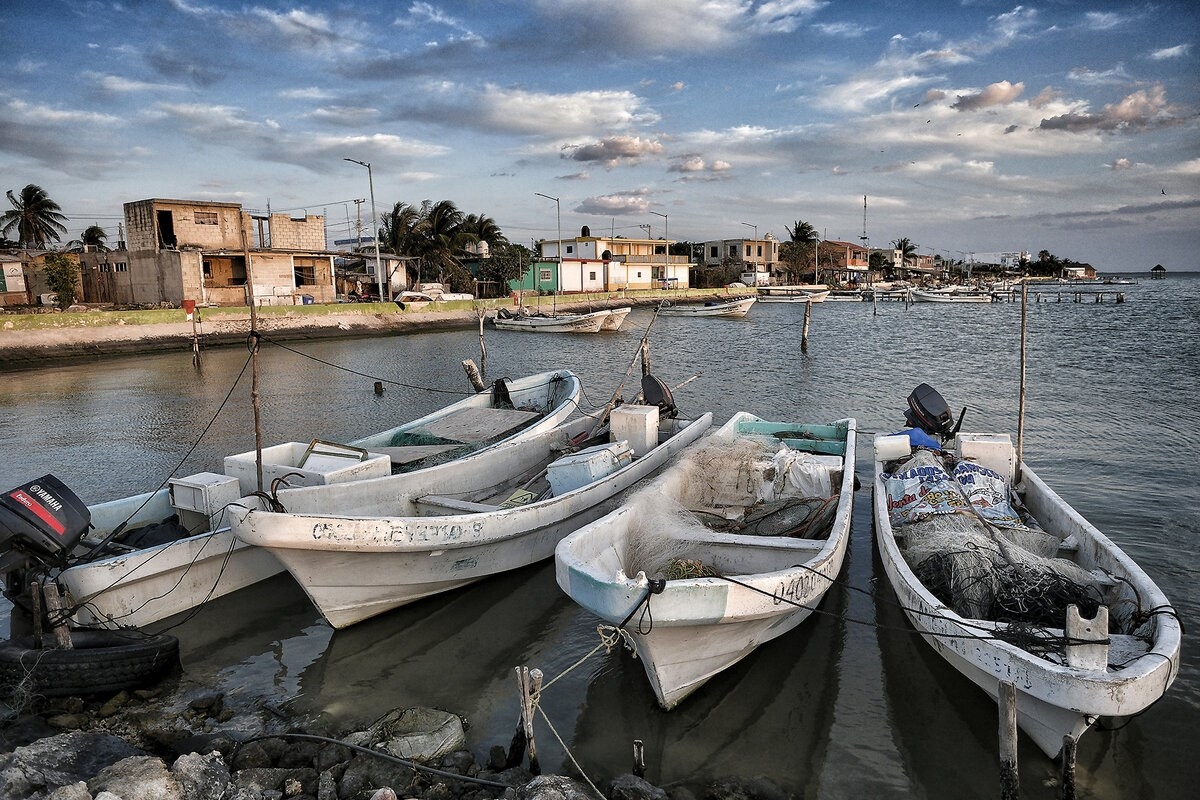 Oscar EspinosaHARBORING DREAMS: Fishing is a way of life on Isla Arena, which has 1,000 inhabitants. Beekeeping is only a secondary source of income for Elma and Mario.
Oscar EspinosaHARBORING DREAMS: Fishing is a way of life on Isla Arena, which has 1,000 inhabitants. Beekeeping is only a secondary source of income for Elma and Mario.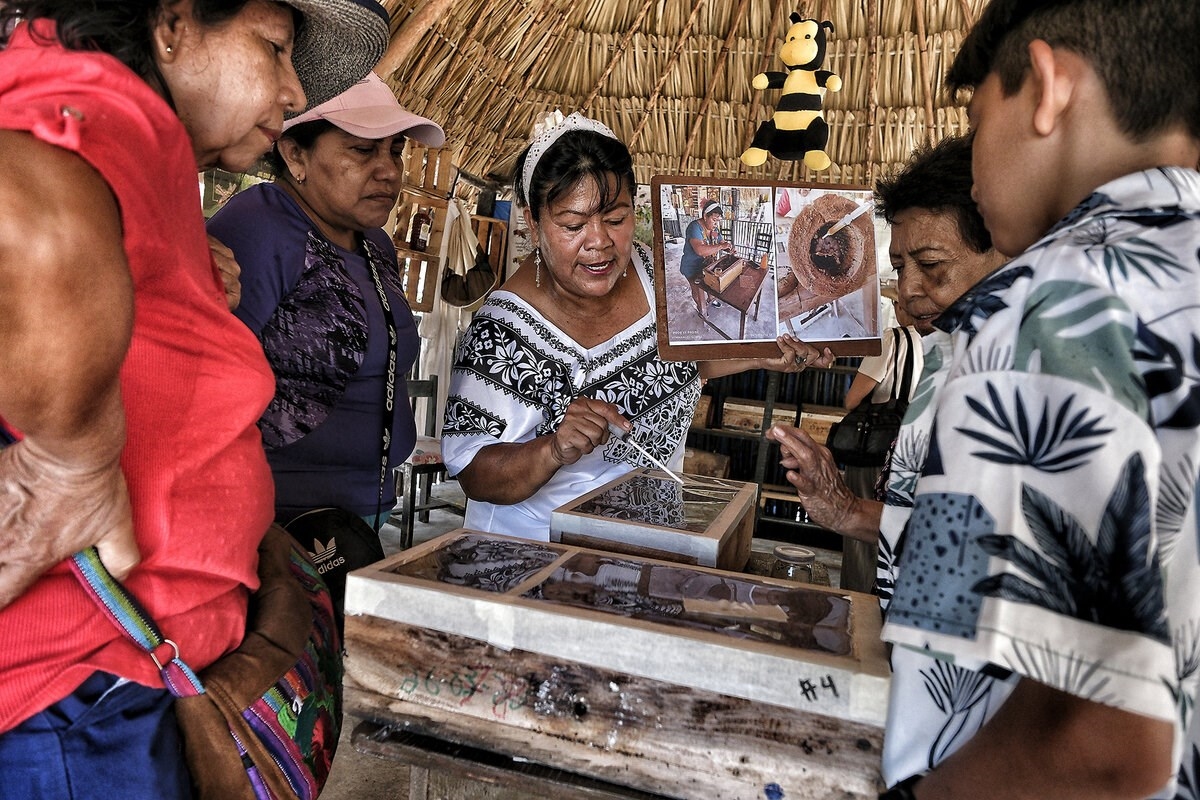 Oscar EspinosaA SWARM OF TOURISTS: The meliponarium attracts curious visitors who want to get an up-close look at how the honeybees are bred.
Oscar EspinosaA SWARM OF TOURISTS: The meliponarium attracts curious visitors who want to get an up-close look at how the honeybees are bred.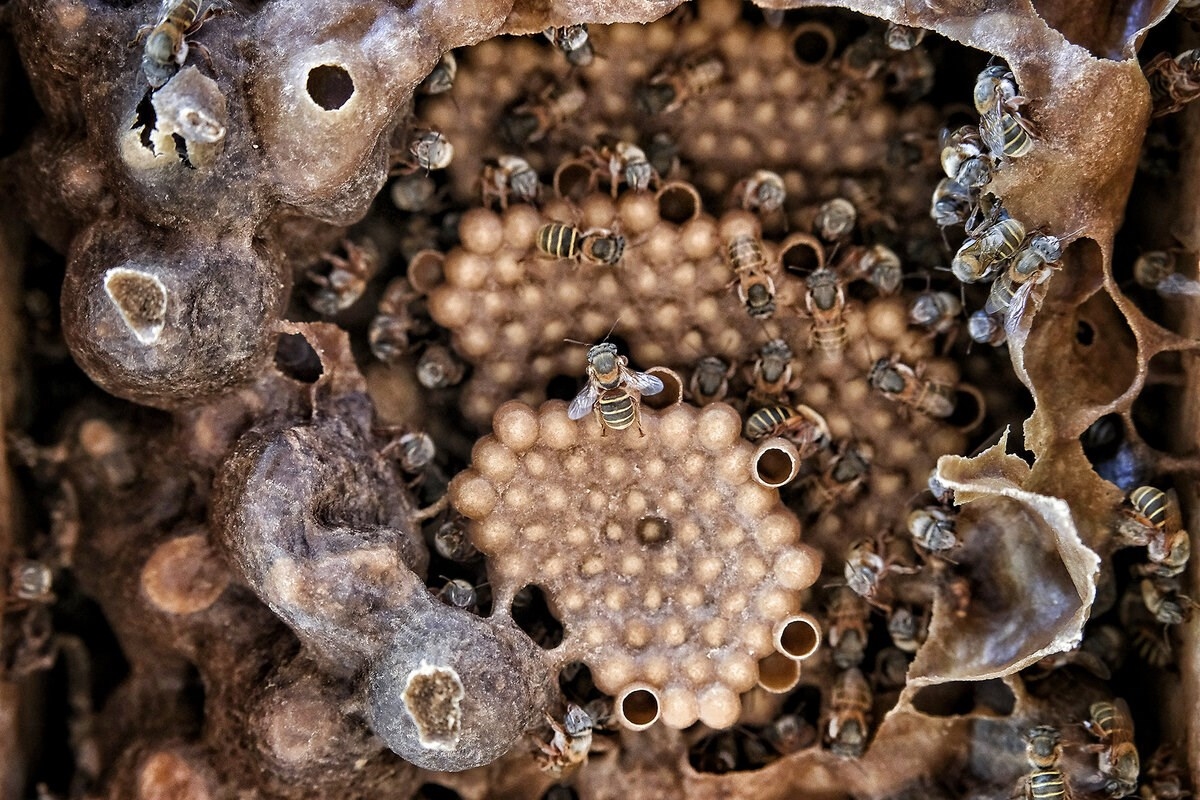 Oscar EspinosaPOTS OF GOLD: The bees raised in the Cab family’s backyard do not use honeycombs in the production of honey, as those in the mangroves do; instead, they make small wax pots that they fill with the substance.
Oscar EspinosaPOTS OF GOLD: The bees raised in the Cab family’s backyard do not use honeycombs in the production of honey, as those in the mangroves do; instead, they make small wax pots that they fill with the substance.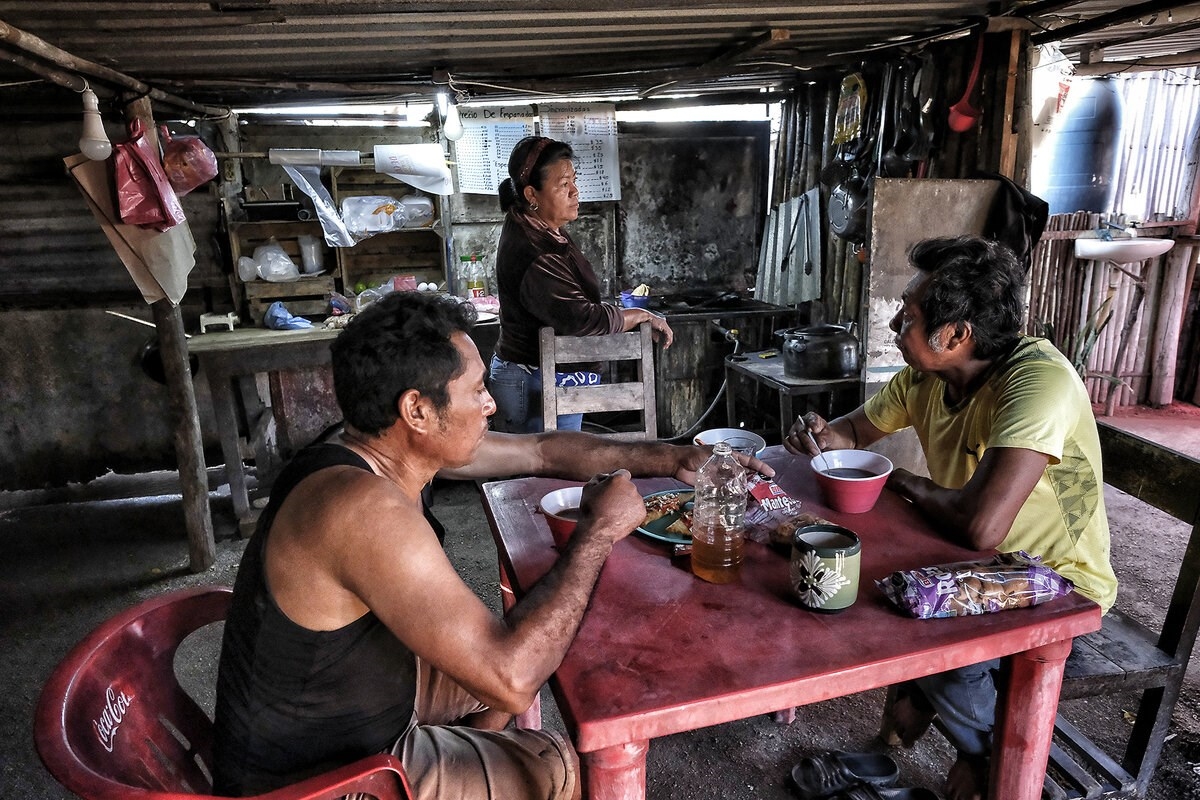 Oscar EspinosaSWEET TREAT: The harvested honey is added to the Cab family’s breakfast coffee. Mangrove honey is slightly saltier than most other varieties.
Oscar EspinosaSWEET TREAT: The harvested honey is added to the Cab family’s breakfast coffee. Mangrove honey is slightly saltier than most other varieties.
For more visual storytelling that captures communities, traditions, and cultures around the globe, visit The World in Pictures.
Page created on 10/14/2025 7:09:20 PM
Last edited 10/14/2025 7:23:50 PM
